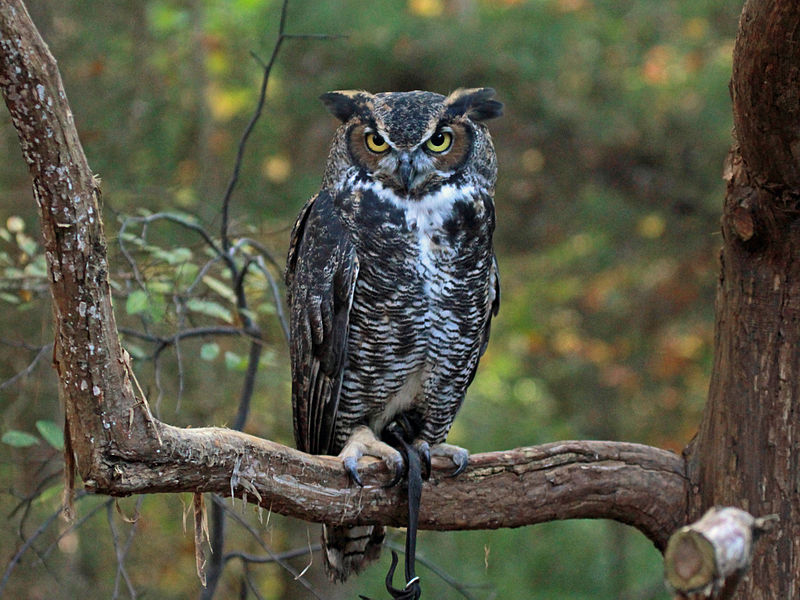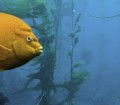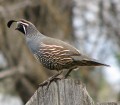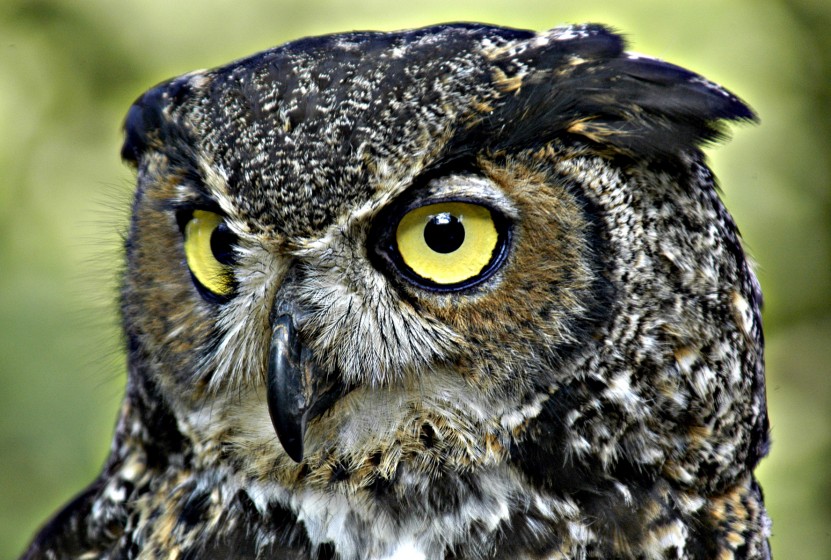The Great Horned Owl (Bubo virginianus) also called the Hoot Owl is one of the largest and most widely distributed Owls in North America. Great Horned Owls are found from the Alaskan arctic, down to the tip of South America and flourish in a variety of environs. They are also called Tiger Owls for their striped plumage and fierce hunting skills. They get the name “Horned Owl” for the tufts of feathers on the tops of their heads which are called plumicorns . The color and pattern of their feathers varies depending on their home environment, from darker browns in northern forests, to lighter tans in more arid country. Their stripes add extra camouflage by mimicking the look of tree bark. Owls rely on this camouflage both while hunting at night and while resting in the day.
Owl feathers are very stiff which prevents the passing air from making sound during flight.

By day, the Horned Owl snoozes and sits very still, deep in the branches of trees and will conceal themselves further by stretching their bodies vertically to break up their appearance. If Crows find an Owl perched during the day, they will often caw loudly while in large groups in order to ruin the Owl’s hiding place and make it move on.
Night time is when the Great Horned Owl becomes most active. After dark they will perch high, with an unobstructed view, watching for any movement in the open areas below. The owls sit motionless except for their head which can rotate around 270 degrees. You may hear their hooting after midnight, but you won’t hear them swooping onto any prey that is unfortunate enough to be caught crossing in the open. Owl feathers are very stiff which prevents the passing air from making sound during flight. This stealthiness along with excellent hearing, night vision and sharp talons make these owls very successful predators that will eat anything that scurries like rabbits, rodents and reptiles. The Great Horned Owl even seem to enjoy regularly eating skunks which after dinner can leave their feathers and nest a bit smelly. (That must be an acquired taste.)
Owls truly are wise and when they have an abundance of food they will cache some in their nest for later on. Once a day the Great Horned Owl will regurgitate a “pellet” which is the bones, fur and other undigestible material left over from their meals. If you see these on the ground there is a really good chance that you are in the presence of a Great Horned Owl- Hootey Hoo !



